#Employee Time Tracking Software
Explore tagged Tumblr posts
Text
What CEOs Should Know About Time Tracking Before Their Next Payroll Cycle
In the race to meet payroll deadlines, CEOs get extremely concerned about paying employees on time and accurately. But there is a little secret: while payroll might be posting on time, incorrect or old-fashioned time tracking could be costing your business a high cost every month. Inflated overtime? Missed hours? Or simply good guesswork? Bad timekeeping is quietly eating away at profit margins.

If you are a business leader, it is time to move beyond basic attendance to understanding good Employee Time Tracking Software as an advanced move for the next payroll cycle.
Why Traditional Time Tracking Fails Modern Businesses
Spreadsheets, punch cards, or casual self-reporting are still acceptable in many organizations. Such a phrase is outdated; it would be more accurate to say risky. Here are the reasons why it does not work:
The manual entry includes errors that lead to payroll disputes
Time theft (buddy punching, late starts, early outs) goes unnoticed
Zero real-time visibility into what remote or field teams are doing
There is no audit trail to go against the actual work done
When you combine all of the information, you'll see that your time tracking system determines how accurate your payroll data is.
What Is Employee Time Tracking Software?
Employee Time Tracking Software is a computer application that records and keeps track of employees' working hours, days, and locations. This use of technology degrades the old-time wrong methods with trustworthy data. It allows real-time, accurate data to flow to managers and payroll for hours worked, job progress, and productivity-whether their teams work remotely, hybrid, or out in the field.
The CEO’s Checklist: What to Look for in a Time Tracking Solution
Mark down these checklists before running the next payroll:
1. Accuracy You Can Trust
With accurate software, there is no guesswork involved in a punch-in and out, an application, a GPS check-in, or lots of other techniques via which an employee's activities can be traced. This serves to clock hours accurately, thus helping in flawless payroll processing every time.
2. Real-Time Insights
A good Employee Time Tracking Software talks about real-time dashboards that have active, off, and pending tasks. No more calling HR heads for updates while it's all on your screen.
3. Mobile-Friendly for Field and Remote Staff
Are field teams in transit? A new app allows a modern employee to log hours against a task using mobile devices.
4. Integration with Payroll and HR Systems
These tools are directly connected to your payroll software. It means no more manual data transfers or mismatched calculations, saving both time and human error.
5. Compliance and Audit Readiness
In the finance, health care, and manufacturing domains, compliance is everything. Time tracking software keeps secure logs- thus easy passage of audits and labour regulations becomes trouble-free.
The Hidden Costs of Not Using Employee Time Tracking Software
Is it still something you're doubtful to accept? What inaction is costing you: Payroll overpayments from wrong calculations of working hours. The most unbilled hours are in the experience-focused, service-based industries. Poor productivity by scoring the performance of work done especially in comparison to planned target hours. An extra administrative burden over HR due to time sheets and the subsequent errors need to pay for themselves. Employee discontent because of debates over hours or payment delays. Add it all together, and by the month, it's quite a figure, even for smaller businesses. Time-tracking solutions should be integrated more strategically than just a basic back-end activity.
Time Tracking App: A Game Changer for the New Workforce
The modern worker is adaptable and prioritizes technology. Time-tracking apps ensure your alignment with the workforce. A prime app would offer the following:
Clock in/out with a single tap from anywhere
GPS tagging to authenticate the location of the field staff
Task-based tracking to connect hours worked with project outcomes
It also logs break time and idle time to guarantee fair usage of labour
Push notifications for changes in shift, reminders of work, or overtime
When their teams are supported and trusted, engagement and accountability significantly rise, and that's something all CEOs want.
How CEOs Can Lead the Change
As the CEO, you would be leading the organization-wide adoption of any technology. There are ways to lead the change to a better time-tracking system: Pilot the software in one department first. Engage HR and finance teams from the start for smooth implementation. Communicate "why" to employees: Show how it benefits them too. Set policies and norms regarding time logging. Track ROI in reduced errors, compliance, and faster payroll cycles. It is about optimizing performance, not just an hour count, and creating a work environment that is transparent and efficient.
Conclusion: Time to Rethink Time
Your approach of time tracking translates into your strategy of doing business. If you're still depending on outdated systems that means, you're risking your payroll, profits, and people.
Before the next payroll, ask yourself:
Am I completely confident in how my employees are recording their time?
If the answer is "not really," it is time to get trained with Employee Time Tracking Software. Making payroll accurate and seamless with TrackOlap for time tracking software. To facilitate accurate payrolls and smooth time tracking for your business, TrackOlap has the finest Employee Time Tracking Software and a simple-to-use time tracking app. Beat the next payroll cycle with real-time insights and automation—get started with TrackOlap today.
#employee time tracking software#employee time tracking#employee tracking#employee tracking software#employee tracking app#employee monitoring software#employee tracking software dubai#time tracking software#business automation software
0 notes
Text
Time Champ's Employee Geofencing and GPS Tracking!
In this video, we delve into the powerful employee GPS tracking and geofencing feature offered by Time Champ. With this feature, your team's clock-ins and outs are streamlined through geofences as they enter or exit designated locations. You'll learn how to effortlessly monitor job site visits, login/logout times, and enhance project management. Discover the step-by-step process of creating a job site within Time Champ, including adding team members, selecting projects, setting tasks, and configuring automatic time tracking. If your team operates across multiple client sites, the mobile app comes in handy. Explore how to navigate through project details, view reports, and access comprehensive activity summaries. With location tracking, say goodbye to errors and manual timesheet management, and say hello to accurate and efficient time tracking. Watch the video to optimize your team's productivity today!
#time tracking software#productivity#employee time tracking software#employee productivity time tracking#employee time tracking app#timetracking#technology#time tracking tool#best time tracking app#employee GPS tracking#Geofencing
0 notes
Text
Employee Time Tracking in Delhi
0 notes
Text
Time Tracking Software Trends That Will Dominate 2025

A typical work day in the life of an office goer is almost entirely filled with coordinating a variety of things rather than being involved in creating something top-notch. A 2023 Microsoft report on productivity and time management states that the top 25% of email users report spending 8.8 hours weekly on inbox management. We also see that the segment of meeting attendees that makes up a quarter of the group reportedly spends 7.5 hours per week in meetings which in turn leaves little room for indulging in something more focused and of high value. In 2025, companies are going beyond tools that log hours and are instead turning to platforms that give out strategic insight into how time is spent, how productivity may be improved, and how we may better protect employee well being. This new age of employee time tracking is smarter, more personal, and is designed to empower both employers and employees. Let’s take a look at the top trends in employee time tracking which will define 2025 and change how organizations handle time management.
AI-Powered Insights, Not Just Tracking
At present, AI is very much a part of time tracking. As we progress in 2025, we will see a change from initial automation to the integration of what is truly intelligent AI. What we will see is employee time tracking software going beyond just what it does now – which is to log time but also to predict task durations, identify inefficiencies, and put forth scheduling improvements in real-time. Also, these tools will look at past data, identify trends of distraction or overload and before that point is reached, have managers jump in to do something about it before productivity is affected.
Hyper-Personalized User Experiences
As we progress into 2025, employee time tracking software will have taken personalization to a new level. We will see interfaces, reminders, and productivity prompts that are tuned to each individual’s work style. From what type of focus periods they have to when they are at their most productive or how they switch between tasks we will see software that is very personal and in turn more intuitive and less intrusive.
Context-Aware Time Allocation
Instead of tracking time in small increments, the new tools will see the big picture – what employees are working on at any given time, which may be very focused like coding, or more diffuse like email. This will allow companies to base performance on results instead of just time put in, which in turn will produce more relevant productivity measures and fairer performance reviews.
Cross-Border Compliance & Labor Law Intelligence
In 2025, global hybrid teams will increasingly be the norm which means employee time tracking software will include legal compliance features for each region’s labor laws. This includes tracking of mandatory breaks, maximum work hours, overtime pay rates, and public holiday observance for each country which in turn will reduce legal risk and promote ethical practices.
Integrated AI Companions
We could also see the rollout of employee time tracking software that includes AI companions or copilots. These assistants will do the heavy lifting by which they prepare weekly reports, put together the justifications for timesheets, and also assist in the onboarding of new employees by taking them through the tracking process step by step. We are to think of them as intelligent HR support within the time tracking platform.
Sustainability Dashboards
Environmental issues will grow to be a larger business tech issue. We could see progressive employee time tracking software which includes sustainability dashboards that report on energy saved from remote work, which also calculate what emissions would have been from commutes had remote options not been used, and which also look at in-office vs remote energy use. Also, this will help companies tie in their time tracking with ESG corporate goals.
Wearable Integration for Wellness-Driven Tracking
Smart growth in the wearable tech field will see more into the time tracking space. We’ll see smartwatches and other wearables report biometric information like heart rate variability and alertness which in return will go to employee time tracking systems. Thus we will see better load management, and breaks suggested at signs of fatigue, also we will have put in place changes to tasks to maximize mental energy.
Voice-Enabled and Hands-Free Tracking
Voice assistants such as Google Assistant or Alexa will be incorporated into time tracking tools which in turn will allow staff to log hours, start timers, or view time logs hands-free. This trend will especially benefit field staff and professionals in hands-on roles that do not have easy keyboard access.
Freelancer & Gig Worker Optimization
As the freelance economy grows, employee time tracking software is seeing the introduction of features that play to the needs of independent contractors. We see multi-client dashboards, real-time work logs for greater transparency, AI-generated invoices, and integrated payment systems. These features will made time tracking a requirement of large corporations as well as self employed professionals which are looking to have better control of their time.
As we progress into the future, the employee time tracking software field will be one of great changes which will see large growth in smart and flexible innovation. We will see a large role for AI in analysis, personalization, cross-border compliance, and sustainability, which will take these from tools that mainly track time to being the systems that enable us to work more smartly and live better. Companies that put themselves at the front of these trends will do best in terms of efficiency, transparency, and employee satisfaction. Is your business ready for the future of time tracking? See how Handdy’s employee time tracking software will put you at the front of the pack in 2025 and beyond.
#employee productivity tracking software#employee monitoring software#employee time tracking software#employee productivity tracking#employee attendance tracking software#employee productivity software
0 notes
Text

Software developer productivity tools are designed to enhance efficiency, streamline workflows, and eliminate distractions for developers. These tools focus on coding, collaboration, task management, and automation to help developers deliver high-quality software faster.
0 notes
Text

Time tracking software is a vital tool for businesses, enabling efficient management of employee work hours, project timelines, and productivity. It automates the process of recording time spent on tasks, helping businesses maintain accuracy in billing, payroll, and resource allocation. With real-time insights, companies can identify bottlenecks, optimize workflows, and enhance accountability. Ideal for remote teams, freelancers, and organizations, time tracking software ensures transparency and boosts overall productivity.
#employee time tracking system#staff time tracking software#best time tracking system#real time tracking system#time tracking software uk#best time tracking software#employee time tracking software#time tracking software
0 notes
Text
Beyond their knowledge of payroll and inbound and outbound calls, call center managers need soft and hard work to improve team productivity and customer satisfaction.
According to Forbes, leaders who are less inspiring and motivated make 47% of their direct reports consider quitting, and 93% of the time, they are rated in the bottom 10% of productivity.
A competent manager should be able to handle challenging calls, handle complaints, and provide excellent customer service.
But the list doesn’t end here!
Hiring a manager for a call center is a challenging job.
An average call center has a turnover rate of 30-45%, according to the Quality Assurance & Training Connection. Many new hires quit even before training is completed.
But, finding a suitable candidate with the right mindset can make the process easier. Every good leader demonstrates only a few skills and qualities. So, let’s explore those essential call center manager skills.
#productivity#time tracking software#best employee time tracking software#employee time tracking software#BPO Time Tracking Software
0 notes
Text

Optimize Employee Hours with Time Tracking Software
Maximize your team's productivity and efficiency with time tracking software. "Optimize Employee Hours with Time Tracking Software" provides insights into the best tools available for accurately tracking work hours, managing attendance, and analyzing productivity. Discover how these solutions can help you streamline payroll, reduce administrative tasks, and ensure that every minute of work is accounted for. Perfect for businesses of all sizes, this guide will show you how to leverage time tracking software to enhance your workforce management and drive better results.
Visit - https://www.workstatus.io/time-attendance/time-tracking-software
1 note
·
View note
Text
Efficient Employee Time Clock and Tracking Software Accurate House Cleaning Time Estimator for Enhanced Workforce Management
Are you looking to streamline your workforce management and ensure accurate time tracking? Discover the power of employee time clock software and employee time tracking software from Get Punch IO. Our innovative solutions are designed to revolutionize how you manage employee attendance and productivity, whether you operate a small business or a large enterprise.
Visit Here https://punchious.hashnode.dev/efficient-employee-time-clock-and-tracking-software-accurate-house-cleaning-time-estimator-for-enhanced-workforce-management

#employee time clock software#employee time clock#employee time tracking software#house cleaning time estimator
0 notes
Text
Stressed For Managing Remote Teams? How Time Tracking Software Can Help!
The most challenging task for now is managing remote workers. It is all about bringing miles-hectic people together and trying to overlap their work life with the new requirements
of jobs. Today, most companies struggle with questions about how to manage their teams effectively but still ensure that productivity and employee satisfaction are maintained. The simplest way to relieve all of these problems and to have an efficient team is time tracking software.
Understanding the Challenges of Remote Management
Remote management has its own challenges. Lack of face-to-face interaction could hinder communication, leading to delays and confusion. Tracking productivity and keeping employees accountable is hard when they work independently. The organization is battling unfamiliar challenges as it makes the transition into one where some company employees are working from home, thereby increasing stress in its domain for managers. The following are just a few examples of the common obstacles encountered:
Communication Gaps
Performance Visibility
Work-Life Balance
Cultural Disconnect
Remote work also has the effect of making personal and professional lives inseparable, while team building and the company culture maintained suffer a lot in terms of going steadily up the hill.
The Role of Time-Tracking Software
Time tracking software has immense potential for addressing such issues by focusing on how employees use their time and thus helping managers make more informed decisions for a healthier environment among employees. Such ways include:
Enhanced Communication
Most Time Tracking Software will also add features for communication to encourage collaboration among team members. It further helps bridge the communication gap usually found in remote settings.
Real-Time Insights
You can determine employee activity in real-time through tracking features of automation . It then allows a timely intervention whenever someone is struggling or disengages.
Performance Evaluation
This feature allows you to create a performance report on pure data rather than speculation. This feature will help in identifying high-performers while bringing to attention those who may need little assistance.
Work-Life Balance
Encouraging employees to report accurately their hours gives way to balance the workload among workers and people who overworking themselves, thus favouring a healthy work-life balance.
Cultural Cohesion
Some advanced Time Tracking Software include those with team recognition and feedback features to maintain a healthy company culture in a virtual environment.
Innovative Features That Come in Handy
To make the best use of Time Tracking Software, look for solutions that offer innovative features like:
Automated Time Capture: This feature relieves manual entry errors and automatically tracks time for a given task.
Mobile Access: Staff should be able to track their time anywhere, giving them flexibility and convenience.
Project-based Tracking: This will let the company see where time is spent between different projects and where resources are allocated.
Analytics Dashboards: Advanced Analytics will help understand productivity levels and trends over time to support decision-making based on data.
Training and Support: Key to Successful Implementation
Implementing a new technology such as Time Tracking Software requires careful planning and support. Important steps include:
Full Training Programs: Employees should be trained on the effective use of the software. Training may include live demos, video tutorials, and written tutorials or guides.
Continuous Support: Employees will have continuous support through dedicated help desks and online channels where they can seek assistance in adapting to the new system.
Feedback Mechanisms: Let them tell you about their experience with the software. Use that feedback to improve and redesign what needs to be improved.
Encouragement for Usage: Offer some incentive for the specific teams or individuals that are perhaps most consistently effective in using the time-tracking software. This could encourage a culture of responsibility and engagement.
Promoting Employee Engagement Through Time Tracking
Installing Time Tracking Software is not just about clocking hours; it's about creating an engaged workforce. Here are some tactics:
Involve Employees in the Process: Accept input from team members on the selection of time-tracking tools. Their buy-in will result in higher adoption rates.
Set Clear Expectations: Explain to employees how the time tracking should benefit their organization and themselves. Stress it's for productivity and not for micromanaging.
Recognize Achievements: Use your time-tracking software data to celebrate milestones and give public recognition to individual contributions.
Encourage Skill Development: Apply insights from time tracking data to pinpoint skill shortages and offer training to fill those gaps. This will illustrate that the organization is interested in their career development.
Champion a Feedback Culture: Create an environment where employees feel free to provide their input on the time-tracking procedure. Regularly ask for their opinions toward improving the software so that they can see their voice alter workplace practices.
With the above strategies, organizations would nurture a workforce that is highly engaged and motivated, leading to increased productivity and job satisfaction.
Future Trends in Time Tracking for Remote Teams
If we look directly at the future most of the trends that will shape Time Tracking Software will also advise the future of remote work management leans as follows:
AI Integration: AI will help in enhancing the data analytics to much deeper insight into employee performance and productivity patterns.
Mental Health: When organizations start realizing how the impact of time tracking tools can reach to issues regarding mental health from the remote workspace, they will take steps to add features concerning promoting well-being, like notifications for too much overtime or reminders for breaks.
Hybrid Work Models: In the future, there will be more hybrid, time-tracking solutions that will also have to be able to accommodate both the in-office and remote workers into one seamless method.
Energy Expenditure Tracking: This new movement will require recording not only the hours worked but also keeping track of mental and physical energy during those tasks. Discovering employees' energies and understanding their relationship to the associated work helps the organisation in determining employee engagement and prevention of burnout in healthier environments.
Voice and Natural Language Processing (NLP): Employees can simply enter their time and manage tasks through voice commands into their Time Tracking Software thanks to an add-on that integrates voice recognition technology. Of course, the addition reduces the complexity of tracking and makes the whole process more intuitive and user-friendly, particularly for those who struggle to use conventional interfaces.
These are trends that showcase the futuristic bending of time tracking tools to make more productive and easier tools for all the employees.https://www.youtube.com/embed/dLXcoPq2NYA
Stay in Control, Even from Afar!
Managing remote employees is that simple and does not need to be too heavy on your shoulders. Companies can achieve that using solutions offered by Time Tracking Software through better communication, greater visibility, improved performance, a well balanced work-life, and a thriving culture among their teams.
While reducing stress for the manager, buying the right tool gives the employee a sense of empowerment from the structure and clarity in their day. While you navigate the maze of modern remote management, why not build a solid time-tracking solution that matches well with your organization turning what would be a challenge into an opportunity for growth and success?
Discover TrackOlap today; check how our world-class and full-suite time-tracking software will redefine your remote management experience.
#employee time tracking software#employee time tracking solutions#employee time tracking system#employee time tracking app#employee time management software#employee time tracker#employee tracking software#employee tracking#employee tracking app#employee monitoring software#employee time tracking
0 notes
Text
#time tracking software#productivity#employee time tracking software#employee productivity time tracking#employee time tracking app#time tracking#time tracking tool#best time tracking app#timetracking#technology
0 notes
Text
Effective Time Management: Top 10 SMART Goals Examples To Boost Your Productivity

Time management is a critical skill in today's fast-paced world. Whether you're an employee, manager, or business owner, optimizing how you spend your time can significantly enhance productivity. One proven method for improving time management is by setting SMART goals. SMART goals are Specific, Measurable, Achievable, Relevant, and Time-bound. This article will explore ten time management smart goals examples to help you manage your time more effectively and introduce tools like time tracker software for employees and workforce management software to support your goals.
How to Set Time Management Goals?
Setting time management goals involves identifying areas where time is wasted and finding strategies to maximize productivity. Here’s how to do it:
Identify Priorities: Determine what tasks are most important and need immediate attention.
Set Clear Objectives: Define what you want to achieve with your time management efforts.
Break Down Tasks: Divide larger tasks into smaller, manageable parts.
Create a Timeline: Allocate specific time frames for each task.
Monitor Progress: Regularly check your progress to stay on track.
By following these steps, you can ensure your goals are realistic and attainable.
Top 10 SMART Goals Examples for Time Management
Here are ten SMART goals that can help you improve your time management:

Daily Task Lists
Specific: Create a daily task list each morning.
Measurable: Include at least five tasks per day.
Achievable: Ensure tasks are realistically manageable within the day.
Relevant: Focus on tasks that align with your overall objectives.
Time-bound: Complete the task list by the end of each workday.
Weekly Planning Sessions
Specific: Spend 30 minutes every Sunday planning the week.
Measurable: Plan for at least five tasks each week.
Achievable: Use available tools like calendars or planners.
Relevant: Prioritize tasks that contribute to your long-term goals.
Time-bound: Have the plan ready by Sunday evening.
Limiting Meeting Times
Specific: Reduce meeting durations to 30 minutes.
Measurable: Implement this for all meetings in a week.
Achievable: Communicate this change to all participants.
Relevant: Focus on making meetings more efficient.
Time-bound: Start implementing from the beginning of the month.
Time Blocking
Specific: Use time blocking to dedicate specific hours to particular tasks.
Measurable: Block out at least 3 hours daily for focused work.
Achievable: Use calendar tools to allocate blocks.
Relevant: Improve focus and reduce multitasking.
Time-bound: Start Monday and review after a month.
Using Time Tracker Software
Specific: Implement time tracker software like EMPMonitor.
Measurable: Track time for at least different tasks daily.
Achievable: Integrate software into daily routine.
Relevant: Gain insights into time usage patterns.
Time-bound: Analyze tracked data weekly.
Setting Break Times
Specific: Take a 10-minute break every 90 minutes.
Measurable: Schedule breaks for all workdays.
Achievable: Use alarms or software reminders.
Relevant: Prevent burnout and maintain productivity.
Time-bound: Implement starting tomorrow.
Email Management
Specific: Check and respond to emails only twice a day.
Measurable: Allocate 30 minutes in the morning and afternoon.
Achievable: Inform colleagues of your email schedule.
Relevant: Reduce constant interruptions.
Time-bound: Start from the coming workweek.
Delegating Tasks
Specific: Delegate at least two tasks per week to team members.
Measurable: Identify and delegate tasks every Monday.
Achievable: Choose tasks suitable for delegation.
Relevant: Focus on high-priority tasks.
Time-bound: Review delegation effectiveness bi-weekly.
Learning and Development
Specific: Dedicate 1 hour each week to learning new skills.
Measurable: Choose and complete one course or module monthly.
Achievable: Use online resources like LinkedIn Learning.
Relevant: Improve skills relevant to your job.
Time-bound: Begin this month and review progress quarterly.
Reviewing Goals
Specific: Review and adjust time management goals monthly.
Measurable: Evaluate progress on all set goals.
Achievable: Allocate an hour for this task each month.
Relevant: Ensure goals remain aligned with objectives.
Time-bound: Conduct reviews on the last Friday of each month.
How to Use Workforce Management Software for Time Management
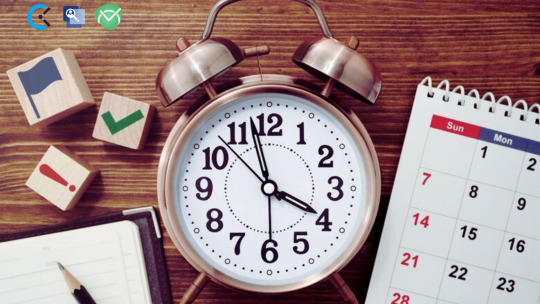
Workforce management software can significantly enhance time management. These tools help track employee performance, manage schedules, and streamline workflow. Here are some tools and how they can be used:
EMPMonitor:
Tracks employee activity and productivity.
Provides detailed reports on time spent on tasks.
Helps identify time-wasting activities.
TimeCamp:
Automatic time tracking and project management.
Help allocate resources efficiently.
Integrate with other project management tools.
Clockify:
Free time tracking tool for teams.
Track billable hours and productivity.
Generate detailed reports for analysis.
You Can Also Watch:
youtube
Conclusion:
Effectual time management smart goals examples are crucial for personal and professional productivity and achievement. By setting SMART goals, utilizing time tracker software for employees, and leveraging workforce management software, you can significantly enhance your time management skills. Implement these strategies and tools to boost your productivity and achieve your objectives efficiently.
#time management#smart goals examples#Smart goal for time management#time tracker software#workforce management#employee time tracking software#Youtube
0 notes
Text

Why pay premium prices for workforce management?
Handdy offers website monitoring, screenshot capture, attendance tracking, break monitoring, and detailed productivity reports at the market's most affordable price.
Start your free trial now (cancel any time): www.handdy.com
#employee monitoring#employee productivity tracking#employee activity tracking#employee monitoring software#employee time tracking software
0 notes
Text
Time Mastery For Enhanced Time Management Goal Examples

Time management is crucial for productivity and success, both in personal and professional life. Effective time management involves setting clear goals and priorities, managing distractions, and using tools like time management goal examples tracker software and workforce management software. Here, we'll explore how mastering time can lead to enhanced productivity with examples of time management goals.
Understanding Time Mastery
Time mastery is the ability to effectively manage your time to achieve your goals. It involves setting SMART goals, prioritizing tasks, and using tools to track and manage time efficiently. By mastering time, you can improve productivity, reduce stress, and achieve a better work-life balance.
SMART Goals for Time Management
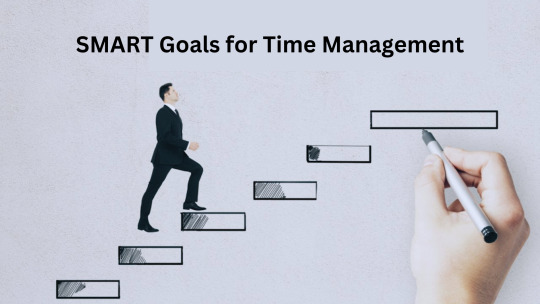
Specific: Goals should be clear and specific, answering the questions of who, what, when, where, why, and how. Rather than stating "I want to be more productive," an example of a particular objective would be "I will finish the project report by Friday."
Measurable: To monitor and assess progress, goals ought to be measurable. It helps in staying motivated and focused. For instance, "I will reduce time spent on social media by 30 minutes per day" is measurable because you can track the time spent and see if you are meeting your goal.
Achievable: Goals should be realistic and attainable. While it's good to set challenging goals, they should also be within reach. For example, "I will attend a time management workshop to learn new strategies" is achievable because attending a workshop is within your control.
Relevant: Goals should be relevant to your overall objectives and aligned with your values and long-term goals. For instance, "I will prioritize tasks based on their importance and impact on my goals" is relevant because it directly contributes to better time tracking.
Time-bound: Goals should have a deadline or timeframe. It creates a sense of urgency and helps in prioritizing tasks. For example, "I will finish reading the book by the end of the month" has a clear time frame, which makes it time-bound.
By setting SMART goals, you can increase your chances of success by making your goals more focused, measurable, and achievable.
Examples of Time Management Goals
Improve Task Prioritization: This goal involves using a priority matrix, such as the Eisenhower Matrix, to categorize tasks based on urgency and importance. By focusing on high-priority tasks first, you can ensure that you are working on the most important things and avoid wasting time on less important tasks.
Reduce Procrastination: The goal here is to use the Pomodoro Technique, a time management method that involves working in focused intervals (usually 25 minutes) followed by a short break (usually 5 minutes). This technique helps in breaking tasks into manageable intervals and can reduce the tendency to procrastinate.
Enhance Focus: To enhance focus, the goal is to create a distraction-free work environment. This can be achieved by turning off notifications on your phone and computer, as well as limiting multitasking. You can increase your productivity and level of focus by reducing outside distractions.
Optimize Meetings: This goal involves setting clear agendas for meetings and keeping them concise. By doing so, you can ensure that meetings are productive and time-efficient. Clear agendas help in staying focused and can prevent meetings from going off track.
Delegate Tasks: The goal of delegating tasks is to free up time for more important responsibilities. By delegating tasks that can be done by others, you can focus on tasks that require your expertise and attention, thereby improving your overall efficiency.
These examples demonstrate how setting specific time management goals can help you improve your productivity and manage your time more effectively.
Time Tracker Software for Employees
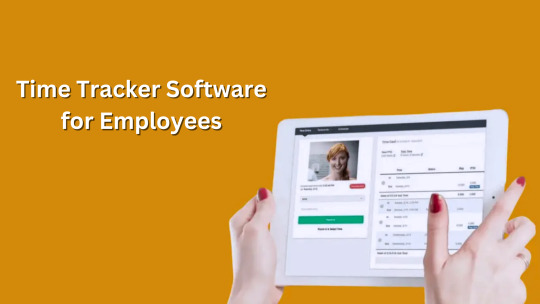
Time tracker software for employees is a valuable tool used to monitor and manage time spent on tasks. It allows employers to track employee retention productivity, identify time-wasting activities, and improve overall efficiency. These software solutions offer features such as time tracking, task management, and reporting, enabling businesses to optimize their workforce's time usage. Popular options in this category include Toggl, Harvest, and Clockify, each offering unique features and capabilities to meet the specific needs of different organizations. Overall, time tracker software plays a crucial role in helping businesses manage their resources more effectively and improve their bottom line.
Workforce Management Software
Workforce management software helps businesses manage their workforce more efficiently. It includes features such as scheduling, time tracking, and performance monitoring. Examples of workforce management software include Kronos, ADP, and BambooHR.
Final Reflections
Mastering time is essential for enhancing productivity and achieving your goals. By setting SMART goals, using time management goal examples, and optimizing your workflow with workforce management software, you can take control of your time and accomplish more in less time.
#Time management goal examples#Smart goal for time management#Time tracker software for employees#Workforce management software#Employee time tracking software
0 notes
Text

0 notes
Text
Time Mastery For Enhanced Time Management Goal Examples
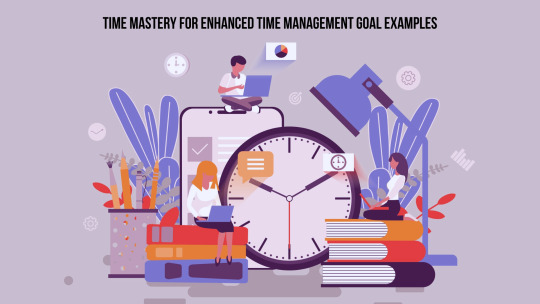
Time management is crucial for productivity and success, both in personal and professional life. Effective time management involves setting clear goals and priorities, managing distractions, and using tools like time management goal examples tracker software and workforce management software. Here, we'll explore how mastering time can lead to enhanced productivity with examples of time management goals.
Understanding Time Mastery
Time mastery is the ability to effectively manage your time to achieve your goals. It involves setting SMART goals, prioritizing tasks, and using tools to track and manage time efficiently. By mastering time, you can improve productivity, reduce stress, and achieve a better work-life balance.
SMART Goals for Time Management
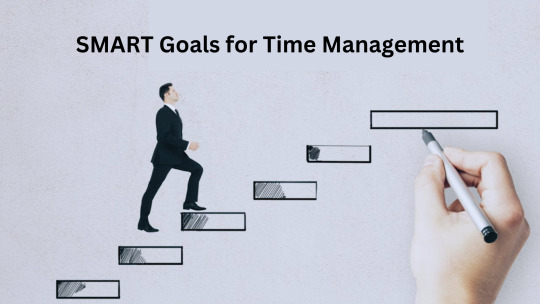
Specific: Goals should be clear and specific, answering the questions of who, what, when, where, why, and how. Rather than stating "I want to be more productive," an example of a particular objective would be "I will finish the project report by Friday."
Measurable: To monitor and assess progress, goals ought to be measurable. It helps in staying motivated and focused. For instance, "I will reduce time spent on social media by 30 minutes per day" is measurable because you can track the time spent and see if you are meeting your goal.
Achievable: Goals should be realistic and attainable. While it's good to set challenging goals, they should also be within reach. For example, "I will attend a time management workshop to learn new strategies" is achievable because attending a workshop is within your control.
Relevant: Goals should be relevant to your overall objectives and aligned with your values and long-term goals. For instance, "I will prioritize tasks based on their importance and impact on my goals" is relevant because it directly contributes to better time tracking.
Time-bound: Goals should have a deadline or timeframe. It creates a sense of urgency and helps in prioritizing tasks. For example, "I will finish reading the book by the end of the month" has a clear time frame, which makes it time-bound.
By setting SMART goals, you can increase your chances of success by making your goals more focused, measurable, and achievable.
Examples of Time Management Goals
Improve Task Prioritization: This goal involves using a priority matrix, such as the Eisenhower Matrix, to categorize tasks based on urgency and importance. By focusing on high-priority tasks first, you can ensure that you are working on the most important things and avoid wasting time on less important tasks.
Reduce Procrastination: The goal here is to use the Pomodoro Technique, a time management method that involves working in focused intervals (usually 25 minutes) followed by a short break (usually 5 minutes). This technique helps in breaking tasks into manageable intervals and can reduce the tendency to procrastinate.
Enhance Focus: To enhance focus, the goal is to create a distraction-free work environment. This can be achieved by turning off notifications on your phone and computer, as well as limiting multitasking. You can increase your productivity and level of focus by reducing outside distractions.
Optimize Meetings: This goal involves setting clear agendas for meetings and keeping them concise. By doing so, you can ensure that meetings are productive and time-efficient. Clear agendas help in staying focused and can prevent meetings from going off track.
Delegate Tasks: The goal of delegating tasks is to free up time for more important responsibilities. By delegating tasks that can be done by others, you can focus on tasks that require your expertise and attention, thereby improving your overall efficiency.
These examples demonstrate how setting specific time management goals can help you improve your productivity and manage your time more effectively.
Time Tracker Software for Employees
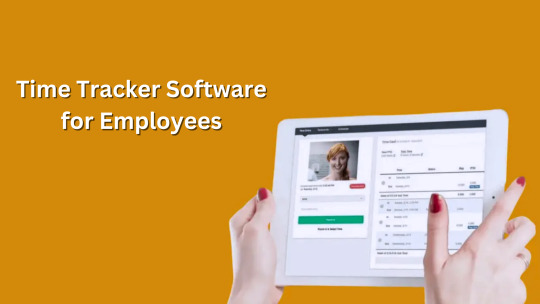
Time tracker software for employees is a valuable tool used to monitor and manage time spent on tasks. It allows employers to track employee retention productivity, identify time-wasting activities, and improve overall efficiency. These software solutions offer features such as time tracking, task management, and reporting, enabling businesses to optimize their workforce's time usage. Popular options in this category include Toggl, Harvest, and Clockify, each offering unique features and capabilities to meet the specific needs of different organizations. Overall, time tracker software plays a crucial role in helping businesses manage their resources more effectively and improve their bottom line.
Workforce Management Software
Workforce management software helps businesses manage their workforce more efficiently. It includes features such as scheduling, time tracking, and performance monitoring. Examples of workforce management software include Kronos, ADP, and BambooHR.
Final Reflections
Mastering time is essential for enhancing productivity and achieving your goals. By setting SMART goals, using time management goal examples, and optimizing your workflow with workforce management software, you can take control of your time and accomplish more in less time.
#Time management goal examples#Smart goal for time management#Time tracker software for employees#Workforce management software#Employee time tracking software
0 notes